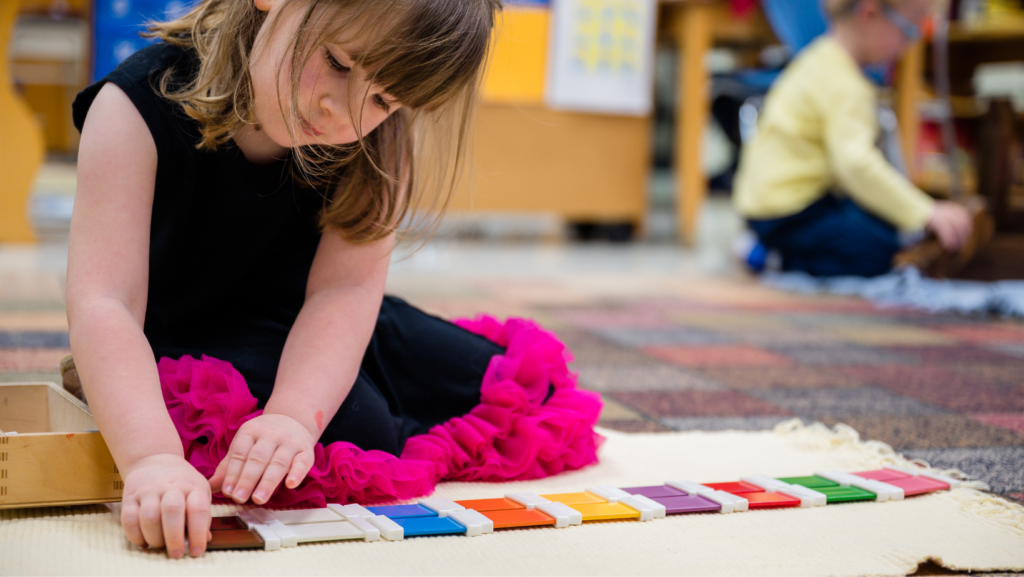Montessori schools promote student-led learning through independent work and focus. Children who attend Montessori schools are encouraged to work at their own pace on whatever task appeals to them in the classroom, as long as it is educational and productive for each child’s holistic development.
Montessori schools are exceptionally quiet because students are encouraged to work on their activities at their own pace, which allows individual focus among the normal hum of interaction with other students and teachers.
When a Montessori student completes an activity or task, they clean up their area and move onto the next thing without needing high levels of direction and instruction from their teachers. Continue reading to find out why Montessori schools are quiet – and how it contributes to an excellent learning environment.
Why Are Montessori Schools So Quiet?
When entering a Montessori school, you may notice a classroom full of mixed-age children busy working on various activities and tasks. Some children will be independently working, and some children may be working in a group. Overall, you will find calmness, cohesiveness, and quiet in a Montessori classroom.
Montessori schools encourage organization and independence in their students and their methods of teaching. Instead of the usual chaotic instruction and lectures of a conventional school, children in Montessori atmospheres are encouraged to freely and calmly interact in educational activities that appeal to them.
Instead of having to sit in a chair and listen to instruction for hours on end, Montessori students are allowed to roam and explore, as long as they respectfully clean up their task when completed.
Here are the reasons why Montessori schools are so quiet:
- Respect – Montessori schools teach children mutual respect for one another. When children respect peers and adults equally, everyone can coexist in a more peaceful environment.
- Independence – Children in Montessori schools are encouraged to independently explore, experiment, and manipulate objects and activities in the classroom. Because of this, there is little opportunity for boredom or mischievous outbursts.
- Ability to move – Montessori students are encouraged to walk around, move, and explore, which gives little time for children to get antsy and act out. Unlike conventional schools, Montessori students thrive on constant movement and personal redirection.
The peace within a Montessori classroom is a bonus to the benefits of Montessori education. Maria Montessori intended for there to be order inside Montessori classrooms, through creating a sense of independence and community inside every mixed-age class.
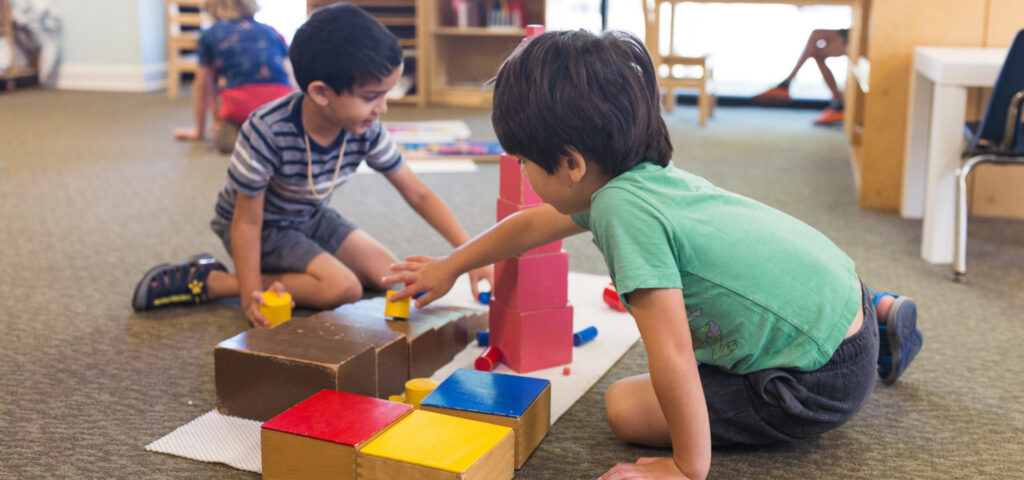
Five Reasons for Silence in a Montessori Classroom
Montessori classrooms are made up of an organized yet free-range type of play and learning, allowing children to learn on their terms within safe boundaries that have been created by each Montessori teacher.
Montessori schools take a unique approach and strive to do more than what is required for each student to help them reach their highest potential. All children are different, and the Montessori method believes that each child should be treated as such.
There are five reasons behind the tranquility found within a Montessori classroom:
- Mutual respect
- Busy minds
- Preparation
- Personal growth
- Peer interaction
Mutual Respect
Students are encouraged to respect both their peers and their teachers. In return, Montessori teachers offer equal respect to their students through behaviors, language, and in-class aid. Montessori teachers believe that if they expect respect from their students, they must also show their students this same kindness.
This mutual respect helps to foster:
- Students that are respectful of others’ space
- Students that can get along with one another through compromise
- Students that understand the importance of quietly working on their unique activity and not demanding unnecessary attention
Through mutual respect, creativity can spark effortlessly among students and teachers. This offers a safe atmosphere for students to blossom into the individuals they are meant to become.
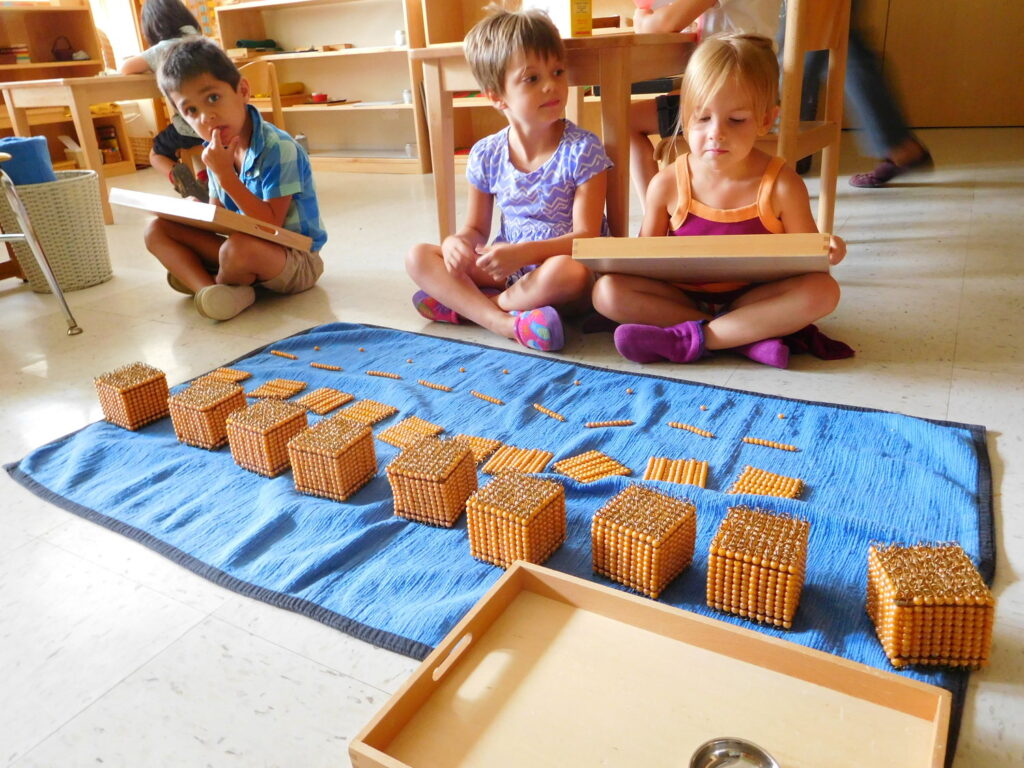
Busy Minds
Busy children who are continually learning and interacting with new things that keep them focused and mentally stimulated have little time for boredom or chances to get into trouble! Idle minds are at risk of creating more chaos than busy ones.
Montessori schools promote student-led learning through creativity, independence, and exploration. Because of this, most Montessori students stay highly focused and quiet because they are immersed in the task at hand.
Young children often have difficulty sitting still for extended periods. It is helpful for children to have the opportunity to move around, explore their environment, and use their imagination in unique and insightful ways.
Preparation
Montessori teachers prepare their classrooms ahead of time so that each open-ended activity is set up and ready to be discovered and explored when students enter the classroom. This preparation allows children to quietly begin experimenting with their classroom environment, with little to no aid from their teachers.
It is an essential step for Montessori teachers not only to prepare ahead of time but also to leave the classroom activities open to personal interpretation. This will allow children to create their own goals and learn whatever it is they are ready to learn that specific day. This incorporates child-directed learning through play.
Ways to prepare for a quiet Montessori environment include:
- Keeping toys and learning objects natural and without flashy, noisy components
- Adding simple objects that leave extra room for each child’s imagination to soar, which will, in turn, help children to remain focused and deep in thought
- Eliminating chaotic distractions and adding order to the classroom environment to help keep children calm and quiet as they move around the classroom
- Setting up the classroom with the intention to give students the freedom to roam and explore
- Offering toys and learning objects that leave room for personal interpretation to allow children to use their creativity
Montessori schools create an atmosphere that permits children to thrive while moving, exploring, and manipulating the environment around them.When children are busy and content in their imagination and personal learning experience, they are often more calm and quiet, without even meaning to be.
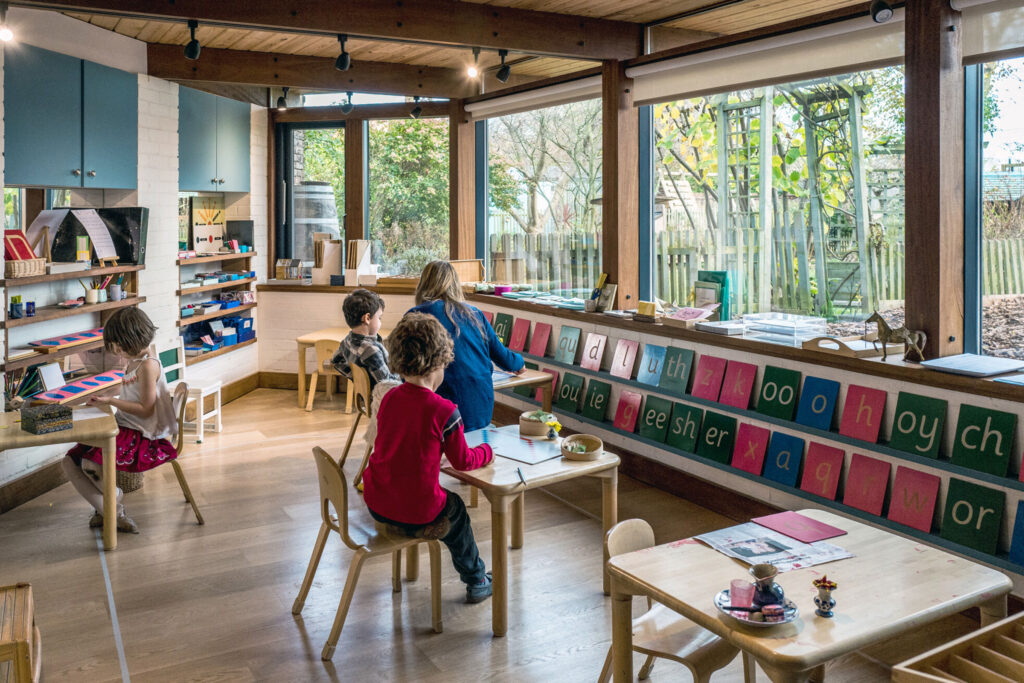
Personal Growth
Montessori schools encourage students to develop and grow at their own pace. Students are not graded on assignments or expected to take tests that tally up their academic intelligence and compare them with their peers.
Instead, children are encouraged to discover their limits and capabilities through hands-on interaction with the world around them. This freedom creates more opportunities for personal growth and calm, quiet play with fewer opportunities for stress and anxiety.
Anxious children who are pressured to test, study, and perform often act out because of their stress.One of the main reasons that Montessori schools are often so quiet is because the students within them are trying hard to reach their personal goals, which creates more of a focused drive and passion for completing their tasks successfully.
Peer Interaction
Montessori classrooms are made up of mixed ages, which allows the older students to help the younger students. Learning how to socialize within multiple age groups and observing more mature and developed behaviors and skill sets are more reasons why Montessori classrooms can be so calming and quiet.
Some ways that peer interaction results in quieter classrooms include:
- Younger children will try to emulate the good behavior of the older students.
- Children will be busy and focused on learning new skills from the older students, which will create concentration and calmness.
- Self-esteem will increase in older children who can help teach younger children new things, which in turn will give them more personal incentive to adhere to the classroom guidelines.
Teaching young children to become leaders within their own, safe environment is a fantastic way to teach personal responsibility, self-esteem, and humility. When these things are achieved, classrooms often run more smoothly and quietly.
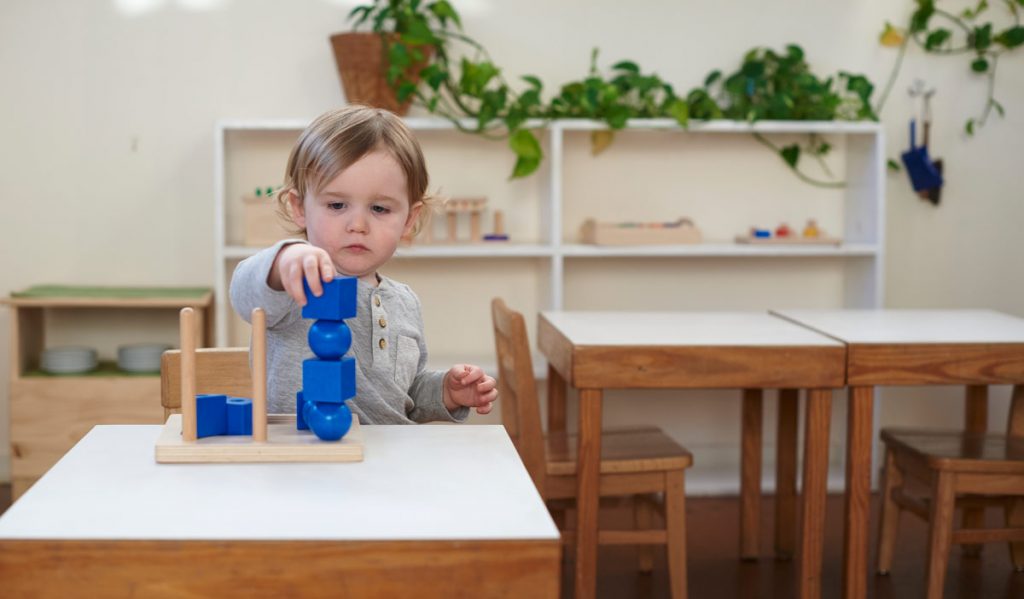
Final Thoughts
Montessori classrooms are often incredibly calm and peaceful, as children have been taught to move from one exploration task to another independently. Through this independent learning, children can explore and broaden their developmental horizons while maintaining a mutual sense of respect for their peers and teachers.
Montessori education offers the ability for each child to learn at their own pace while maintaining healthy social interactions. Even while working in a group, you will find that Montessori classrooms remain peaceful, organized, and very quiet because of the flow and routine that each child has adapted to.
